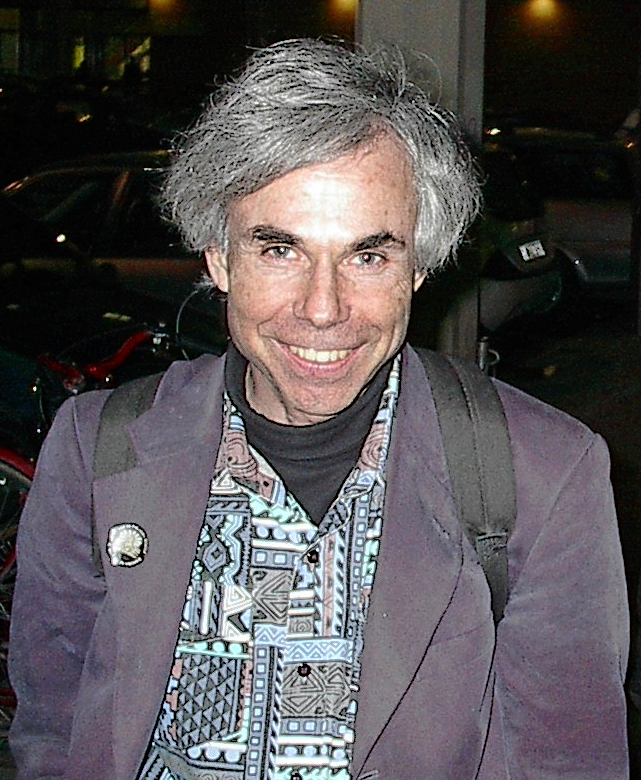|
Aronson's Sequence
Aronson's sequence is an integer sequence defined by the English sentence "T is the first, fourth, eleventh, sixteenth, ... letter in this sentence." Spaces and punctuation are ignored. The first few numbers in the sequence are: :1, 4, 11, 16, 24, 29, 33, 35, 39, 45, 47, 51, 56, 58, 62, 64, 69, 73, 78, 80, 84, 89, 94, 99, 104, 111, 116, 122, 126, 131, 136, 142, 147, 158, 164, 169, ... . In Douglas Hofstadter's book ''Metamagical Themas'', the sequence is credited to Jeffrey Aronson of Oxford, England. The sequence is infinite—and this statement requires some proof. The proof depends on the observation that the English names of all ordinal numbers, except those that end in 2, must contain at least one "t".. Aronson's sequence is closely related to autograms. There are many generalizations of Aronson's sequence and research into the topic is ongoing. write that Aronson's sequence is "a classic example of a self-referential Self-reference occurs in natural or formal lan ... [...More Info...] [...Related Items...] OR: [Wikipedia] [Google] [Baidu] |
Integer Sequence
In mathematics, an integer sequence is a sequence (i.e., an ordered list) of integers. An integer sequence may be specified ''explicitly'' by giving a formula for its ''n''th term, or ''implicitly'' by giving a relationship between its terms. For example, the sequence 0, 1, 1, 2, 3, 5, 8, 13, ... (the Fibonacci sequence) is formed by starting with 0 and 1 and then adding any two consecutive terms to obtain the next one: an implicit description. The sequence 0, 3, 8, 15, ... is formed according to the formula ''n''2 − 1 for the ''n''th term: an explicit definition. Alternatively, an integer sequence may be defined by a property which members of the sequence possess and other integers do not possess. For example, we can determine whether a given integer is a perfect number, even though we do not have a formula for the ''n''th perfect number. Examples Integer sequences that have their own name include: * Abundant numbers * Baum–Sweet sequence * Bell n ... [...More Info...] [...Related Items...] OR: [Wikipedia] [Google] [Baidu] |
Douglas Hofstadter
Douglas Richard Hofstadter (born February 15, 1945) is an American scholar of cognitive science, physics, and comparative literature whose research includes concepts such as the sense of self in relation to the external world, consciousness, analogy-making, artistic creation, literary translation, and discovery in mathematics and physics. His 1979 book '' Gödel, Escher, Bach: An Eternal Golden Braid'' won both the Pulitzer Prize for general nonfiction"General Nonfiction" . ''Past winners and finalists by category''. The Pulitzer Prizes. Retrieved March 17, 2012. and a (at that time called The American Book Award) for Science. [...More Info...] [...Related Items...] OR: [Wikipedia] [Google] [Baidu] |
Metamagical Themas
''Metamagical Themas'' is an eclectic collection of articles that Douglas Hofstadter wrote for the popular science magazine ''Scientific American'' during the early 1980s. The anthology was published in 1985 by Basic Books. The volume is substantial in size and contains extensive notes concerning responses to the articles and other information relevant to their content. (One of the notes—page 65—suggested memetics for the study of memes.) Major themes include: self-reference in memes, language, art and logic; discussions of philosophical issues important in cognitive science/AI; analogies and what makes something similar to something else (specifically what makes, for example, an uppercase letter 'A' recognizable as such); and lengthy discussions of the work of Robert Axelrod on the prisoner's dilemma, as well as the idea of superrationality. The concept of superrationality, and its relevance to the Cold War, environmental issues and such, is accompanied by notes on e ... [...More Info...] [...Related Items...] OR: [Wikipedia] [Google] [Baidu] |
Jeffrey Aronson
Jeffrey Kenneth Aronson (born 1947) is a British clinical pharmacologist. Education Aronson studied at the University of Glasgow from 1964 to 1970, qualifying with the degree of MBChB, and after primary medical training in Glasgow hospitals (MRCP 1973) joined the Medical Research Council's Unit and University Department of Clinical Pharmacology in Oxford, qualifying DPhil Oxon in 1977. Career After further clinical and scientific training, in 1980 he became Wellcome Lecturer and Consultant in Clinical Pharmacology and later Reader in Clinical Pharmacology at the University of Oxford and an honorary consultant physician in the Oxford Radcliffe Hospitals Trust until 2014. He now works as an Honorary Consultant Physician and Clinical Pharmacologist in the Centre for Evidence Based Medicine in the Nuffield Department of Primary Care Health Sciences in Oxford. He served as president of the British Pharmacological Society in 2008-2009; as vice-chairman of the Medicines Commis ... [...More Info...] [...Related Items...] OR: [Wikipedia] [Google] [Baidu] |
Ordinal Number (linguistics)
In linguistics, ordinal numerals or ordinal number words are words representing position or rank in a sequential order; the order may be of size, importance, chronology, and so on (e.g., "third", "tertiary"). They differ from cardinal numerals, which represent quantity (e.g., "three") and other types of numerals. In traditional grammar, all Numeral (linguistics), numerals, including ordinal numerals, are grouped into a separate part of speech ( la, nomen numerale, hence, "noun numeral" in older English grammar books). However, in modern interpretations of English grammar, ordinal numerals are usually conflated with adjectives. Ordinal numbers may be written in English with numerals and letter suffixes: 1st, 2nd or 2d, 3rd or 3d, 4th, 11th, 21st, 101st, 477th, etc., with the suffix acting as an ordinal indicator. Written dates often omit the suffix, although it is nevertheless pronounced. For example: 5 November 1605 (pronounced "the fifth of November ... "); November 5, 1605 ... [...More Info...] [...Related Items...] OR: [Wikipedia] [Google] [Baidu] |
Autogram
An autogram ( grc, αὐτός = self, = letter) is a sentence that describes itself in the sense of providing an inventory of its own characters. They were invented by Lee Sallows, who also coined the word ''autogram''. An essential feature is the use of full cardinal number names such as "one", "two", etc., in recording character counts. Autograms are also called 'self-enumerating' or 'self-documenting' sentences. Often, letter counts only are recorded while punctuation signs are ignored, as in this example: The first autogram to be published was composed by Sallows in 1982 and appeared in Douglas Hofstadter's "Metamagical Themas" column in ''Scientific American''. The task of producing an autogram is perplexing because the object to be described cannot be known until its description is first complete. Self-enumerating pangrams A type of autogram that has attracted special interest is the autogramic pangram, a self-enumerating sentence in which every letter of the alphabet ... [...More Info...] [...Related Items...] OR: [Wikipedia] [Google] [Baidu] |
Self-reference
Self-reference occurs in natural or formal languages when a sentence, idea or formula refers to itself. The reference may be expressed either directly—through some intermediate sentence or formula—or by means of some encoding. In philosophy, it also refers to the ability of a subject to speak of or refer to itself, that is, to have the kind of thought expressed by the first person nominative singular pronoun "I" in English. Self-reference is studied and has applications in mathematics, philosophy, computer programming, second-order cybernetics, and linguistics, as well as in humor. Self-referential statements are sometimes paradoxical, and can also be considered recursive. In logic, mathematics and computing In classical philosophy, paradoxes were created by self-referential concepts such as the omnipotence paradox of asking if it was possible for a being to exist so powerful that it could create a stone that it could not lift. The Epimenides paradox, 'All Cre ... [...More Info...] [...Related Items...] OR: [Wikipedia] [Google] [Baidu] |


